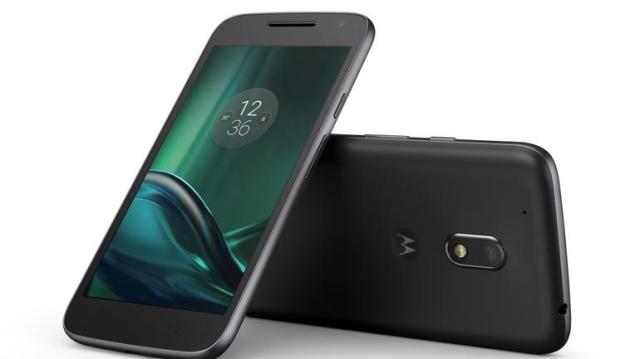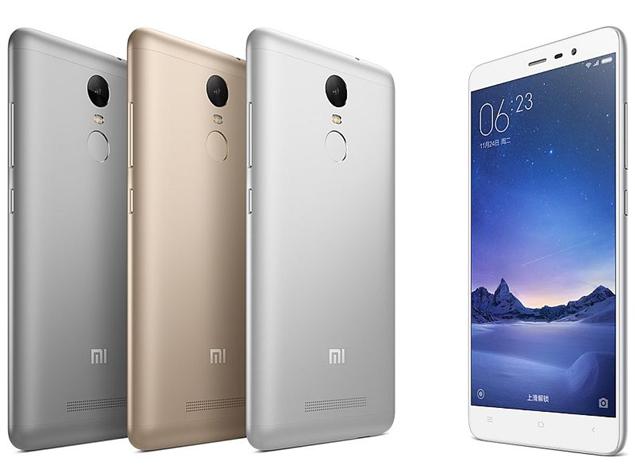Top 5 Android Phones Under Rs.10K ( $150 USD)
 You can't judge a book by its cover. Similarly, you can't judge a phone by its price. 2016 has proved that price is no guarantee for quality and performance. Premium priced flagship phones have flopped and low priced budget phones have also topped the chart in 2016. Especially when Asian market is concerned, its all about low price and high specs. Hence I take the privilege of listing the Top 5 Android Phones Under Rs.10000 or $150 USD. Without any further due, lets jump right into it.
You can't judge a book by its cover. Similarly, you can't judge a phone by its price. 2016 has proved that price is no guarantee for quality and performance. Premium priced flagship phones have flopped and low priced budget phones have also topped the chart in 2016. Especially when Asian market is concerned, its all about low price and high specs. Hence I take the privilege of listing the Top 5 Android Phones Under Rs.10000 or $150 USD. Without any further due, lets jump right into it.
P.S: I have also given the link where you can get the mobiles at the cheapest price possible. Check it out if you are going to buy them.
5. Honor 4x
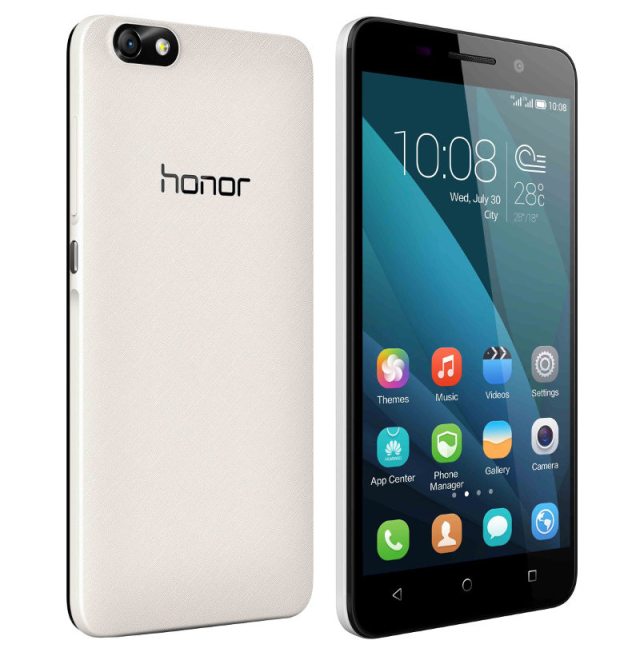
BEST BUY: Amazon
Build and Design: 7/10
Honor 4X is designed fairly well, and the build quality is acceptable. When compared with the Xiaomi Redmi Note 4G, the Honor 4X comes across as comparatively thinner and lighter phone. The plastic used in the construction is not the sturdiest, but not as flimsy as the Lenovo A6000 either. On the rear side, you have the camera section along with the LED flash unit beside it, located on the top left hand corner. The screen is unfortunately a fingerprint magnet, which makes it a screen that needs constant wiping. At the top, you have the earpiece speaker along with the proximity sensor and the front-facing camera.
Camera and Performance: 6/10
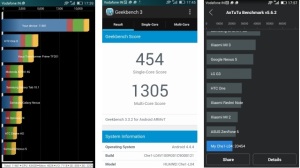 Honor 4X comes with a Qualcomm MSM8916 Snapdragon 410 under the hood that makes this phone fairly good for normal usage and somewhat good for heavy usage but if you are a power user, definitely not recommended. I did not notice any slowdown of the phone while swiping through the home screen or switching between apps. Huawei Honor 4X has a 13MP rear camera and a 2MP front camera. This is the highest resolution camera in this budget, I have seen so far. The camera has a minimal interface and looks quite similar to the one seen with the Xiaomi Mi 4 as well as the iPhone 6/6 Plus.
Honor 4X comes with a Qualcomm MSM8916 Snapdragon 410 under the hood that makes this phone fairly good for normal usage and somewhat good for heavy usage but if you are a power user, definitely not recommended. I did not notice any slowdown of the phone while swiping through the home screen or switching between apps. Huawei Honor 4X has a 13MP rear camera and a 2MP front camera. This is the highest resolution camera in this budget, I have seen so far. The camera has a minimal interface and looks quite similar to the one seen with the Xiaomi Mi 4 as well as the iPhone 6/6 Plus.Value For Price: 6/10
Personally this phone is somewhat value for the money and not the best value for the money because I can get a better phone in sub $150 range for a lower price. But when compared to most of the sub $150 cheap phones that works well only for the first 3 months, this is far better and recommended.
4. Lenovo Vibe K5
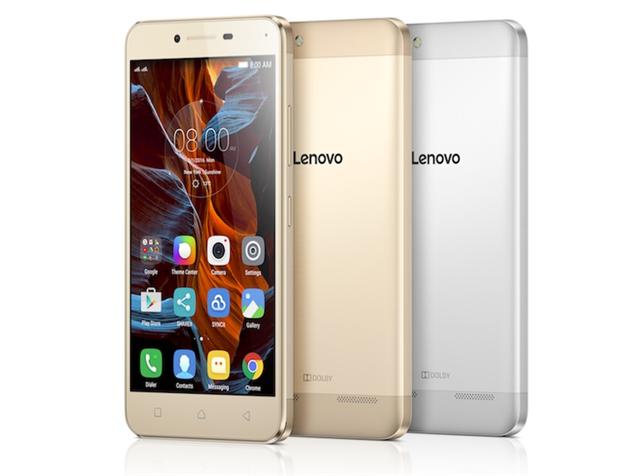
BEST BUY : Amazon
Build and Design: 7/10
The Vibe K5 Plus looks great for a low-cost phone. There's a front camera and sensor window above the screen, and capacitive navigation buttons below. These buttons are sadly not backlit so you might wind up fumbling a bit in the dark. The camera is in one corner, with a single LED flash next to it. More interesting are the twin speaker grilles and Dolby logo lower down - stereo speakers are rare on phones in general, let alone budget ones. The battery is removable, and you'll have to pop it out in order to get to the two Micro-SIM slots and the microSD slot.
Camera and Performance: 7/10
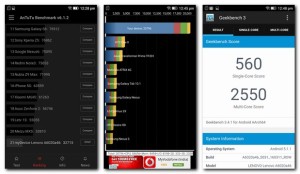 The Lenovo Vibe K5 Plus has a mid-range Qualcomm Snapdragon 616 processor running the show. There's 2GB of RAM and 16GB of storage along with LTE support on either SIM. The battery has a capacity of 2750mAh and all the usual standards, including Bluetooth 4.1, Wi-Fi b/g/n, AGPS, and USB-OTG are present and accounted for. The phone also supports Lenovo's AntVR headset for immersive media experiences. The rear camera has a 13 megapixel sensor and the front camera has a 5 megapixel sensor. Photo quality was mostly okay - there's a bit of grain on anything that isn't right in front of the lens, and only close-up shots are really good. Focusing was an issue in all kinds of light - we had to hold very steady when taking shots or the results would be unpredictable.. There's also Dolby audio enhancement. The screen is sharp and bright, though colours are just a tiny bit dull. Benchmark tests recorded scores of 35,727 in AnTuTu and 20,227 overall in Quadrant. 3DMark Ice Storm Extreme gave us 5,596 points and GFXbench ran at 12fps.
The Lenovo Vibe K5 Plus has a mid-range Qualcomm Snapdragon 616 processor running the show. There's 2GB of RAM and 16GB of storage along with LTE support on either SIM. The battery has a capacity of 2750mAh and all the usual standards, including Bluetooth 4.1, Wi-Fi b/g/n, AGPS, and USB-OTG are present and accounted for. The phone also supports Lenovo's AntVR headset for immersive media experiences. The rear camera has a 13 megapixel sensor and the front camera has a 5 megapixel sensor. Photo quality was mostly okay - there's a bit of grain on anything that isn't right in front of the lens, and only close-up shots are really good. Focusing was an issue in all kinds of light - we had to hold very steady when taking shots or the results would be unpredictable.. There's also Dolby audio enhancement. The screen is sharp and bright, though colours are just a tiny bit dull. Benchmark tests recorded scores of 35,727 in AnTuTu and 20,227 overall in Quadrant. 3DMark Ice Storm Extreme gave us 5,596 points and GFXbench ran at 12fps.Value For Price: 7/10
It seems that Lenovo has the makings of another winner on its hands. It could be as popular as the K3 Note was, bringing similar features and even better looks to a lower price level. The only real objections we have with this phone are its weak battery life and tendency to become uncomfortably warm when anything serious is running.
3. Redmi 3S Prime
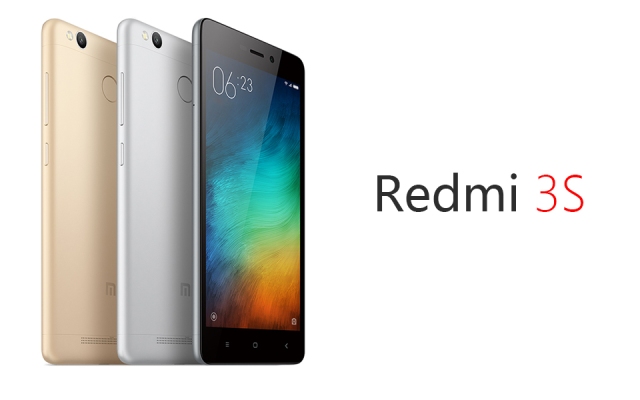
BEST BUY : Mi Store
Build and Design: 8/10
The Redmi 3S follows a design language that is nigh identical to that on the Redmi Note 3. The front of the phone is dominated by the 5inch display that is flanked on all sides by bezels. Below the screen you have three capacitive keys that correspond to menu, home and back.The phone does have some sort of protective glass on top but the company refused to divulge what kind it is. Suffice to say that you should probably look at investing in a good screen protector for your device. It might not be the smartest looking device around but it sure is a very comfortable device to use. Behind the phone you have a decent fingerprint scanner that provides you the extra bit of protection that you need and this feature gives it a look and feel of a phone that you might expect in a midrange sub $300 phone.
Camera and Performance: 7.5/10
If you’ve used a Xiaomi device, you have a good idea of how MIUI works. Based on Android 6.0.1, MIUI 7 on the Redmi 3S is a completely redesigned take on Android with several iPhone-esque cues all around.There are a couple of bundled apps like those for Amazon, Facebook, Flipkart, Swiftkey and WPS Office. It is possible to uninstall these. There’s a Snapdragon 430 processor onboard the handset that includes an Adreno 505 GPU. The Snapdragon 430 might not be the de-facto choice from a performance perspective but what it does offer is a great balance between usability and battery life. Indeed, in day-to-day use you’ll struggle to find a skipped frame or a hint of lag. 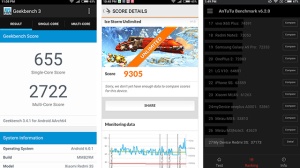 The 720p display further helps in this regard by going easy on the GPU.Even with games, the performance was satisfactorily smooth though we did observe a mild amount of heating near the camera. The Redmi 3S has a 13MP rear facing camera module with phase detection auto focus (PDAF) built-in to speed up the focussing process. In addition, there’s a 5MP front facing camera module. For the most part, we were satisfied with shots from the Redmi 3S especially given the target price point. In low light conditions, the image quality predictably drops as photos become softer and noise levels creep up. With a battery rated for over 4,000 mAh you’d expect the Redmi 3S to last long. Add on top the frugal hardware and the small-ish, 720p screen and you’ve got the makings of a very efficient handset.
The 720p display further helps in this regard by going easy on the GPU.Even with games, the performance was satisfactorily smooth though we did observe a mild amount of heating near the camera. The Redmi 3S has a 13MP rear facing camera module with phase detection auto focus (PDAF) built-in to speed up the focussing process. In addition, there’s a 5MP front facing camera module. For the most part, we were satisfied with shots from the Redmi 3S especially given the target price point. In low light conditions, the image quality predictably drops as photos become softer and noise levels creep up. With a battery rated for over 4,000 mAh you’d expect the Redmi 3S to last long. Add on top the frugal hardware and the small-ish, 720p screen and you’ve got the makings of a very efficient handset.
 The 720p display further helps in this regard by going easy on the GPU.Even with games, the performance was satisfactorily smooth though we did observe a mild amount of heating near the camera. The Redmi 3S has a 13MP rear facing camera module with phase detection auto focus (PDAF) built-in to speed up the focussing process. In addition, there’s a 5MP front facing camera module. For the most part, we were satisfied with shots from the Redmi 3S especially given the target price point. In low light conditions, the image quality predictably drops as photos become softer and noise levels creep up. With a battery rated for over 4,000 mAh you’d expect the Redmi 3S to last long. Add on top the frugal hardware and the small-ish, 720p screen and you’ve got the makings of a very efficient handset.
The 720p display further helps in this regard by going easy on the GPU.Even with games, the performance was satisfactorily smooth though we did observe a mild amount of heating near the camera. The Redmi 3S has a 13MP rear facing camera module with phase detection auto focus (PDAF) built-in to speed up the focussing process. In addition, there’s a 5MP front facing camera module. For the most part, we were satisfied with shots from the Redmi 3S especially given the target price point. In low light conditions, the image quality predictably drops as photos become softer and noise levels creep up. With a battery rated for over 4,000 mAh you’d expect the Redmi 3S to last long. Add on top the frugal hardware and the small-ish, 720p screen and you’ve got the makings of a very efficient handset.Value For Price: 8/10
Redmi 3s prime might be the best choice for a person who is getting his first smart phone. This phone has got almost all the essential features out of the box and all these features gives us more than enough value for the money you pay. Moreover, performance for day-to-day use is good enough and the battery life is phenomenal. You’d be well served by stepping up to the Prime variant of the Redmi 3S for the additional RAM, storage and the very useful fingerprint scanner.
2. Moto G4 Play
BEST BUY : Amazon
Build and Design: 8/10
The Moto G4 Play just wants to have some fun. It isn't necessarily the most skilled at any one thing, but it's hard to look away from a deal this good. Although this phone is targeted towards those on a budget, you wouldn't guess it just by looks alone. The Moto G4 Play looks a lot like the Moto G4, even down to the ruggedized plastic back and rounded edges. But it also takes design cues from high-end phones in the Moto family. Admittedly, the Moto G4 Play exudes a somewhat dull profile when we compare it to some other phones of the same caliber, but we can’t neglect to point out that it receives the same water repellent treatment that we pretty much find in the Moto family line and is likely equally durable. Minor splashes and light rain won’t damage it, which is basically the extent of its water resistance protection. However, don’t expect it to survive full submersion.
Camera and Performance: 8/10
Moto has won over many a hardcore fan of stock Android thanks to its, well, near-stock Android experience. Like the higher-end Moto Z, the G4 Play is equally devoid of bloatware and custom touches that can sometimes be irksome. It's likely that the low-end Snapdragon 410 quad-core processor and the Adreno 306 are to blame for that. All said, it's hard to wag a finger at Moto when the price is so low, but be mindful that this phone is just powerful enough to provide a passable Marshmallow experience and not a whole lot else. To back it all up, the Moto G4 Play comes with 2GB 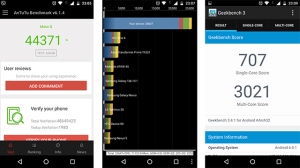 RAM and 16GB of onboard storage, with the option to easily expand upon that thanks to the microSD slot. If you're looking for a phone with fast-charging technology, this isn't one of them. What this means is that compared to most modern smartphones, this one doesn't charge very quickly, so you'll have to plan some time to refill it back to health. From 0%, it took a half hour to bring it up to 30%. At the hour mark, it was sitting at 57%. The front-facing camera is capable of 5MP stills and also has an aperture of f/2.2. Unlike the main camera, which has an LED flash, the front utilizes the display to flash, creating a similar effect in the process. Under the hood, the Moto G4 Play is tucking away a removable 2800 mAh battery, which might not seem all that massive in comparison to some other things, but given its overall size, we’d say it’s a pretty good capacity. And rightfully so, when you combine its smaller screen size, 720p resolution, and battery optimized chipset, it delivers good results with its battery life.
RAM and 16GB of onboard storage, with the option to easily expand upon that thanks to the microSD slot. If you're looking for a phone with fast-charging technology, this isn't one of them. What this means is that compared to most modern smartphones, this one doesn't charge very quickly, so you'll have to plan some time to refill it back to health. From 0%, it took a half hour to bring it up to 30%. At the hour mark, it was sitting at 57%. The front-facing camera is capable of 5MP stills and also has an aperture of f/2.2. Unlike the main camera, which has an LED flash, the front utilizes the display to flash, creating a similar effect in the process. Under the hood, the Moto G4 Play is tucking away a removable 2800 mAh battery, which might not seem all that massive in comparison to some other things, but given its overall size, we’d say it’s a pretty good capacity. And rightfully so, when you combine its smaller screen size, 720p resolution, and battery optimized chipset, it delivers good results with its battery life.
 RAM and 16GB of onboard storage, with the option to easily expand upon that thanks to the microSD slot. If you're looking for a phone with fast-charging technology, this isn't one of them. What this means is that compared to most modern smartphones, this one doesn't charge very quickly, so you'll have to plan some time to refill it back to health. From 0%, it took a half hour to bring it up to 30%. At the hour mark, it was sitting at 57%. The front-facing camera is capable of 5MP stills and also has an aperture of f/2.2. Unlike the main camera, which has an LED flash, the front utilizes the display to flash, creating a similar effect in the process. Under the hood, the Moto G4 Play is tucking away a removable 2800 mAh battery, which might not seem all that massive in comparison to some other things, but given its overall size, we’d say it’s a pretty good capacity. And rightfully so, when you combine its smaller screen size, 720p resolution, and battery optimized chipset, it delivers good results with its battery life.
RAM and 16GB of onboard storage, with the option to easily expand upon that thanks to the microSD slot. If you're looking for a phone with fast-charging technology, this isn't one of them. What this means is that compared to most modern smartphones, this one doesn't charge very quickly, so you'll have to plan some time to refill it back to health. From 0%, it took a half hour to bring it up to 30%. At the hour mark, it was sitting at 57%. The front-facing camera is capable of 5MP stills and also has an aperture of f/2.2. Unlike the main camera, which has an LED flash, the front utilizes the display to flash, creating a similar effect in the process. Under the hood, the Moto G4 Play is tucking away a removable 2800 mAh battery, which might not seem all that massive in comparison to some other things, but given its overall size, we’d say it’s a pretty good capacity. And rightfully so, when you combine its smaller screen size, 720p resolution, and battery optimized chipset, it delivers good results with its battery life.Value For Price: 9/10
No doubt, the Moto G4 Play does nicely for those who aren’t looking for anything more than the most barebone smartphone experience. But when you have other phones that have a smidgen better specs, and even fingerprint sensors, it makes the Moto G4 Play seem a bit overpriced for what you are getting. We’re not saying it’s a bad phone, but rather, the competition has raised the bar from what’s expected in phones of this caliber.
1. Redmi Note 3
BEST BUY : Mi Store
Build and Design: 9/10
After pushing powerful components and cutting prices, manufacturers have started focusing on premium aesthetics and build quality, which appeal even more to customers. The moment you take it out of the box, the Redmi Note 3 looks and feels incredibly premium, especially in gold. The full-metal body gets a smooth matte finish that doesn't attract fingerprints. It's easy to keep clean too, as dust and grime come off with a simple wipe. In the front, we have the 5.5-inch full-HD IPS display with very narrow side bezels. There's a glossy rim running along the edge of the front facia, which is elevated above the rest of the display to protect it from scratches when the phone is placed face-down. We feel that Xiaomi has done a terrific job with the design and aesthetics of the Redmi Note 3. The finish of the phone is excellent and the display is crisp and vibrant. The IPS panel has very good colour reproduction and features Xiaomi's Sunlight Display hardware feature which indeed makes it decently legible even under direct sunlight.
Camera and Performance: 8/10
The Xiaomi Redmi Note 3 might be a budget smartphone but there's certainly nothing low-end about the hardware it packs. This is the first phone to roll out with Qualcomm's Snapdragon 650 SoC, which is a pretty big deal given its near-flagship level performance in some benchmarks. It's a hexa-core SoC, much like the Snapdragon 808 found in the Moto X Style, but instead of the Cortex-A57 cores, we have two of ARM's more powerful 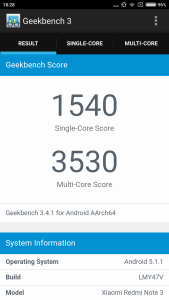 Cortex-A72 cores running at 1.8GHz. In benchmarks, we witnessed some pretty impressive numbers especially considering the price of the device. We got an average of 74,303 in AnTuTu, which is higher than what we got from many high-end phones based on the Snapdragon 810. GPU performance is equally impressive, and we recorded 31fps in the T-Rex test in GFXbench, which once again is competitive to scores posted by Snapdragon 810 devices. The phone ships with an Android Lollipop fork called MIUI 7, which is has been reworked from the ground up. Compared to earlier versions of MIUI, version 7 is certainly more likable and better polished. It's still a single-layered interface, but it does let users customise the look and feel with transition effects and themes. Speaking of heat, the metal body does get warm during continuous video playback and when recording videos, but it doesn't get too uncomfortable. The rear camera has a 16-megapixel sensor and a wide f/2.0 aperture. Both landscapes and macro shots captured in daylight have good detail. Colour reproduction is good too. However, objects in focus lack a bit of definition and aren't very sharp, but this is only visible once you zoom in. Images look good on the phone's display though, and as long as you don't need to crop the picture at full size, you should be good.
Cortex-A72 cores running at 1.8GHz. In benchmarks, we witnessed some pretty impressive numbers especially considering the price of the device. We got an average of 74,303 in AnTuTu, which is higher than what we got from many high-end phones based on the Snapdragon 810. GPU performance is equally impressive, and we recorded 31fps in the T-Rex test in GFXbench, which once again is competitive to scores posted by Snapdragon 810 devices. The phone ships with an Android Lollipop fork called MIUI 7, which is has been reworked from the ground up. Compared to earlier versions of MIUI, version 7 is certainly more likable and better polished. It's still a single-layered interface, but it does let users customise the look and feel with transition effects and themes. Speaking of heat, the metal body does get warm during continuous video playback and when recording videos, but it doesn't get too uncomfortable. The rear camera has a 16-megapixel sensor and a wide f/2.0 aperture. Both landscapes and macro shots captured in daylight have good detail. Colour reproduction is good too. However, objects in focus lack a bit of definition and aren't very sharp, but this is only visible once you zoom in. Images look good on the phone's display though, and as long as you don't need to crop the picture at full size, you should be good.
 Cortex-A72 cores running at 1.8GHz. In benchmarks, we witnessed some pretty impressive numbers especially considering the price of the device. We got an average of 74,303 in AnTuTu, which is higher than what we got from many high-end phones based on the Snapdragon 810. GPU performance is equally impressive, and we recorded 31fps in the T-Rex test in GFXbench, which once again is competitive to scores posted by Snapdragon 810 devices. The phone ships with an Android Lollipop fork called MIUI 7, which is has been reworked from the ground up. Compared to earlier versions of MIUI, version 7 is certainly more likable and better polished. It's still a single-layered interface, but it does let users customise the look and feel with transition effects and themes. Speaking of heat, the metal body does get warm during continuous video playback and when recording videos, but it doesn't get too uncomfortable. The rear camera has a 16-megapixel sensor and a wide f/2.0 aperture. Both landscapes and macro shots captured in daylight have good detail. Colour reproduction is good too. However, objects in focus lack a bit of definition and aren't very sharp, but this is only visible once you zoom in. Images look good on the phone's display though, and as long as you don't need to crop the picture at full size, you should be good.
Cortex-A72 cores running at 1.8GHz. In benchmarks, we witnessed some pretty impressive numbers especially considering the price of the device. We got an average of 74,303 in AnTuTu, which is higher than what we got from many high-end phones based on the Snapdragon 810. GPU performance is equally impressive, and we recorded 31fps in the T-Rex test in GFXbench, which once again is competitive to scores posted by Snapdragon 810 devices. The phone ships with an Android Lollipop fork called MIUI 7, which is has been reworked from the ground up. Compared to earlier versions of MIUI, version 7 is certainly more likable and better polished. It's still a single-layered interface, but it does let users customise the look and feel with transition effects and themes. Speaking of heat, the metal body does get warm during continuous video playback and when recording videos, but it doesn't get too uncomfortable. The rear camera has a 16-megapixel sensor and a wide f/2.0 aperture. Both landscapes and macro shots captured in daylight have good detail. Colour reproduction is good too. However, objects in focus lack a bit of definition and aren't very sharp, but this is only visible once you zoom in. Images look good on the phone's display though, and as long as you don't need to crop the picture at full size, you should be good.Value For Price: 10/10
It's hard to find fault with the Redmi Note 3 as it ticks all the right boxes, and in some ways, rivals phones that cost a lot more. The metal body and fingerprint sensor are welcome additions to the Redmi series, and make the Note 3 feel relevant in 2016. You also get a great display, very good battery life, and a powerful SoC. A few kinks aside, we believe that the Xiaomi Redmi Note 3 is easily one of the best smartphones available for under Rs.10,000 or $150 today, and has the potential to get better with future software updates.

